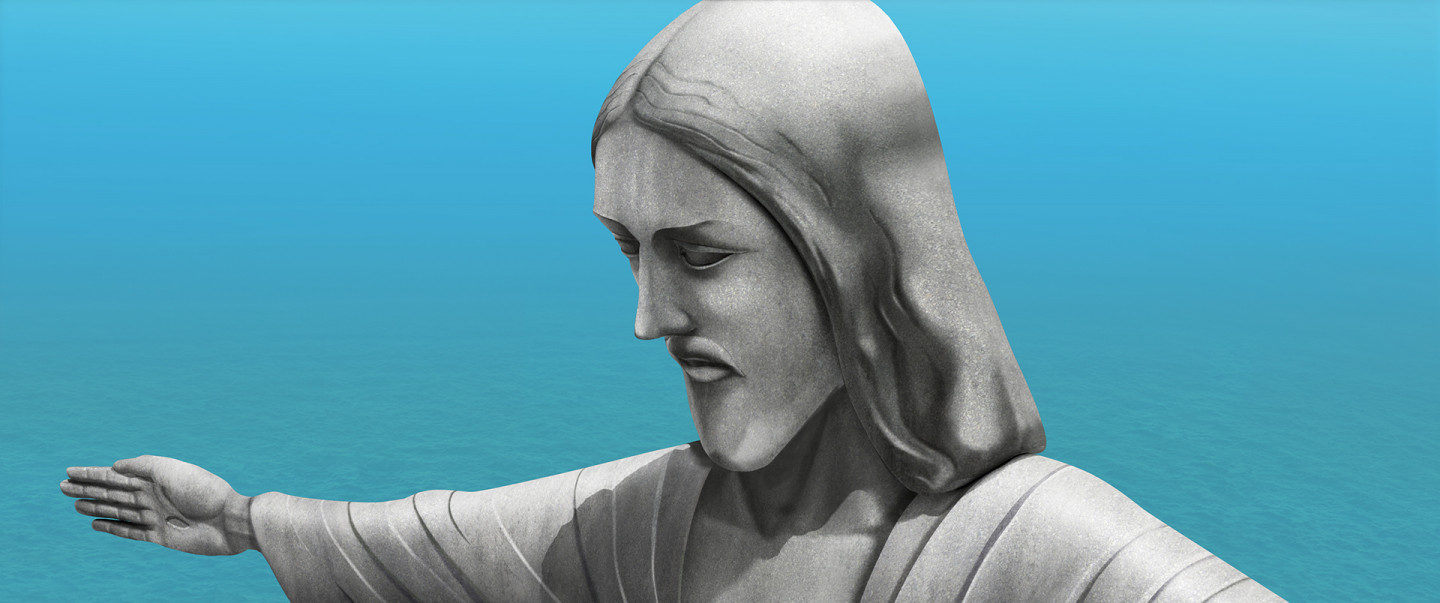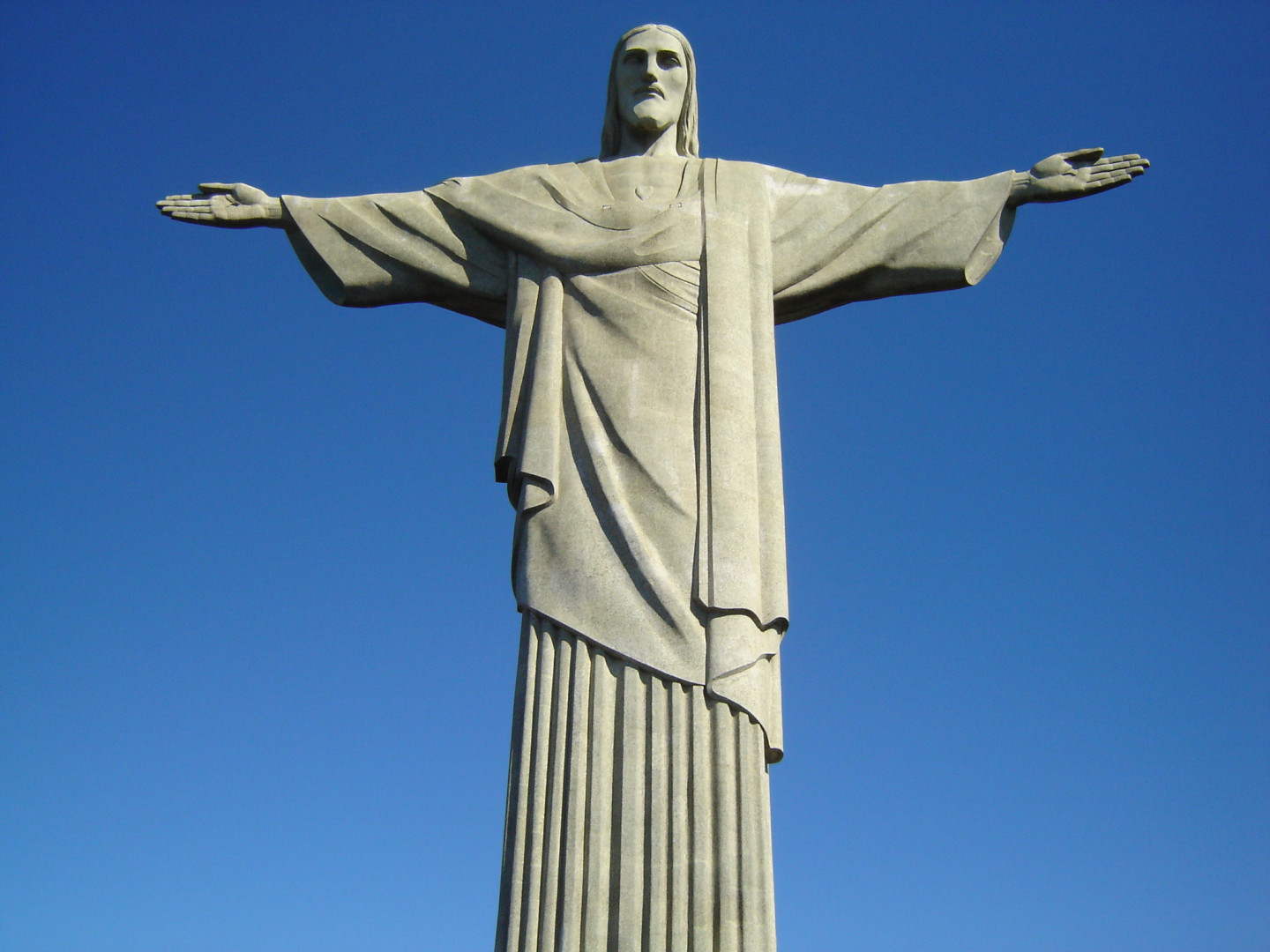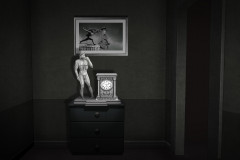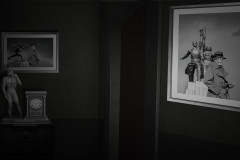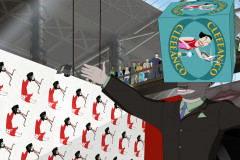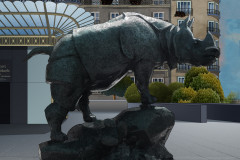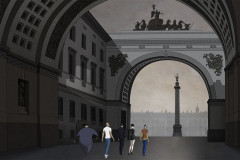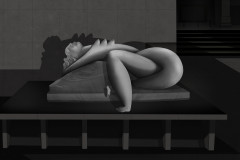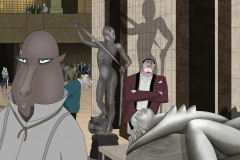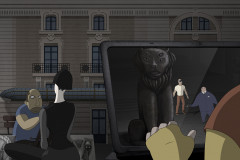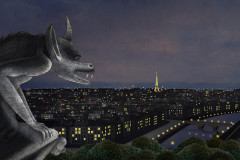Landowski, Paul: A Megváltó Krisztus szobra, 1926-31 (vasbeton, zsírkő, 30 m magas, Rio de Janeiro). Rio de Janeirónak, de talán egész Brazíliának is jelképe ez a karjait óvón a világ fölé táró hatalmas Krisztus szobor, amely a Riótól délre lévő Corcovado-hegyen áll. A Niterói Kortárs Művészeti Múzeumba menet találkoznak vele műkincsrablóink.
A városokban vagy azok közelében lévő hegyek kiváló lehetőséget kínálnak emlékművek elhelyezésére – a város és környezetének szinte minden pontjáról látható, messziről beazonosítható szimbólumról, „minden fölé emelt” értékről van szó. (Gondoljunk csak a budapesti Gellért-hegyen álló Szabadság-szoborra!) Brazíliában, amelynek a 20. század elején még Rio de Janeiro volt a fővárosa, a Portugáliától való függetlenség kikiáltásának (1822) 100 éves évfordulójára tervezték felállítani a Krisztus-emlékművet, amely a maga 30 méterével 1981-ig a világ legnagyobb Krisztus-szobra volt. (Összehasonlításképpen a Gellért-hegyi Szabadság-szobor talapzat nélkül 18 méter magas). 8 méteres talapzatában egy Mária tiszteletére szentelt kápolna van kialakítva. A '20-30-as évekre jellemző art deco stílusú szobor vasbeton-konstrukcióját a brazil mérnök, Heitor da Silva Costa tervezte, a fejek és kezek Paul Landowski lengyel-francia szobrász párizsi műtermében készültek zsírkőből.
Landowski, Paul: Christ the Redeemer, 1926–31 (reinforced concrete, soapstone, 30 m tall, Rio de Janeiro). This monumental statue of Christ, arms outstretched protectively over the world, is the symbol not only of Rio de Janeiro but arguably of all Brazil. It stands atop Corcovado Mountain, just south of Rio. In Ruben Brandt, Collector, the art thieves pass by it on their way to the Niterói Contemporary Art Museum.
Mountains in or near cities offer prime locations for monuments—they are visible from nearly everywhere, serving as unmistakable landmarks and elevated representations of a community’s values. (Consider the Liberty Statue on Budapest’s Gellért Hill, for example.) In Brazil—where Rio de Janeiro remained the capital into the early 20th century—plans for the Christ monument emerged to mark the 100th anniversary of independence from Portugal (1822). At 30 meters tall, it was the largest statue of Christ in the world until 1981. (For comparison, Budapest’s Liberty Statue stands 18 meters tall without its pedestal.) The 8-meter pedestal of Christ the Redeemer houses a chapel dedicated to the Virgin Mary. Designed in the Art Deco style typical of the 1920s and ’30s, the statue’s reinforced concrete structure was engineered by Brazilian Heitor da Silva Costa, while the head and hands were sculpted from soapstone in the Paris studio of Polish-French artist Paul Landowski.






